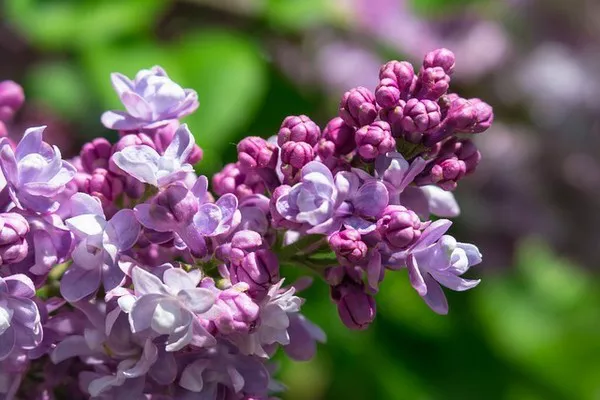Lilac flowers, known for their captivating beauty and delicate fragrance, belong to the genus Syringa, which encompasses approximately 20 to 25 species of flowering plants. These ornamental shrubs and trees are cherished worldwide for their stunning blossoms that range from pale lavender to deep violet. In this article, we will explore the various aspects of lilac flowers, from their scientific nomenclature to the rich cultural symbolism they hold.
Botanical Classification:
The lilac flowers we commonly admire in gardens and parks are primarily from the Syringa vulgaris species. Classified under the family Oleaceae, this deciduous shrub is native to the Balkan Peninsula and was introduced to various parts of the world for its aesthetic appeal. The genus name “Syringa” is derived from the Greek word “syrinx,” meaning tube or pipe, alluding to the hollow stems of these flowers.
Species and Varieties:
While Syringa vulgaris is the most popular species, there are several others that contribute to the diverse world of lilac flowers. Some notable species include Syringa josikaea, Syringa persica, and Syringa microphylla. Each species brings its unique characteristics, such as flower color, size, and fragrance, adding to the overall allure of lilac gardens.
Lilacs also boast an extensive array of cultivars and hybrids developed by horticulturists and enthusiasts. These variations offer an even broader spectrum of colors, ranging from white and pink to magenta and blue. Some well-known cultivars include ‘Charles Joly,’ ‘Miss Kim,’ and ‘President Lincoln,’ each celebrated for its distinct features.
Cultural Significance:
Lilac flowers have transcended their botanical roots to become symbols of various emotions and cultural expressions. In the language of flowers, known as floriography, lilacs are often associated with love, especially the purple varieties, which symbolize the first emotions of love. White lilacs, on the other hand, represent purity and innocence.
In many cultures, lilacs are linked to festivities and celebrations. In the Eastern European tradition, for instance, lilacs are an integral part of springtime festivities, symbolizing the renewal of life and the end of winter. In the United States, lilacs hold a special place in the hearts of those residing in the state of New Hampshire, where the fragrant blossoms are designated as the state flower.
Growing Lilacs:
Lilacs are generally hardy plants, adaptable to a variety of climates and soil conditions. However, they thrive best in well-drained, slightly alkaline soil with good exposure to sunlight. Planting lilacs in the fall allows them to establish strong root systems before the onset of winter. Adequate spacing, pruning, and regular fertilization contribute to the overall health and vibrancy of lilac shrubs.
Pruning is a crucial aspect of lilac care, as it helps maintain a desirable shape and encourages the development of abundant blossoms. Prune shortly after flowering, removing dead or weak wood and shaping the plant to promote air circulation. This ensures a robust bloom for the following season.
Lilacs in Literature and Art:
The captivating beauty of lilac flowers has inspired poets, writers, and artists for centuries. In literature, lilacs often serve as metaphors for beauty, love, and the fleeting nature of time. The renowned poet Walt Whitman, in his poem “When Lilacs Last in the Dooryard Bloom’d,” employed lilacs as symbols of mourning and remembrance in the aftermath of Abraham Lincoln’s assassination.
In art, lilacs have been featured prominently in various paintings, capturing their ephemeral charm. Artists like Vincent van Gogh and Édouard Manet incorporated lilac blossoms into their works, showcasing the flowers’ intricate details and vibrant colors.
Medical and Culinary Uses:
Beyond their aesthetic appeal, lilac flowers have historical applications in traditional medicine and culinary practices. In some cultures, lilac extracts have been used for their purported medicinal properties, including anti-inflammatory and antimicrobial effects. However, it’s essential to approach such uses with caution, as lilacs contain compounds that may cause adverse reactions in certain individuals.
In the culinary world, lilac flowers are occasionally used to infuse syrups, jams, and desserts, adding a subtle floral note to the dishes. It’s crucial to note that while lilacs are generally considered non-toxic, consuming them in large quantities or using varieties treated with pesticides can pose health risks.
Conclusion:
Lilac flowers, with their timeless beauty and rich symbolism, continue to captivate people around the world. From the scientific intricacies of their botanical classification to their cultural significance and artistic inspiration, lilacs offer a multifaceted exploration into the wonders of nature. Whether adorning gardens, gracing literature and art, or playing a role in traditional practices, lilacs stand as enduring symbols of love, beauty, and the ever-renewing cycle of life.


